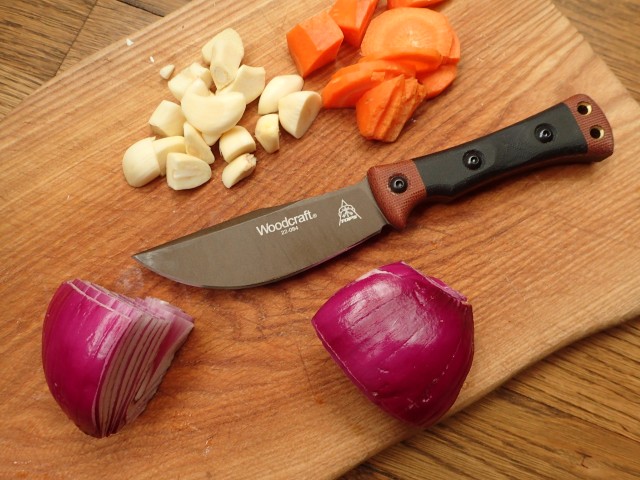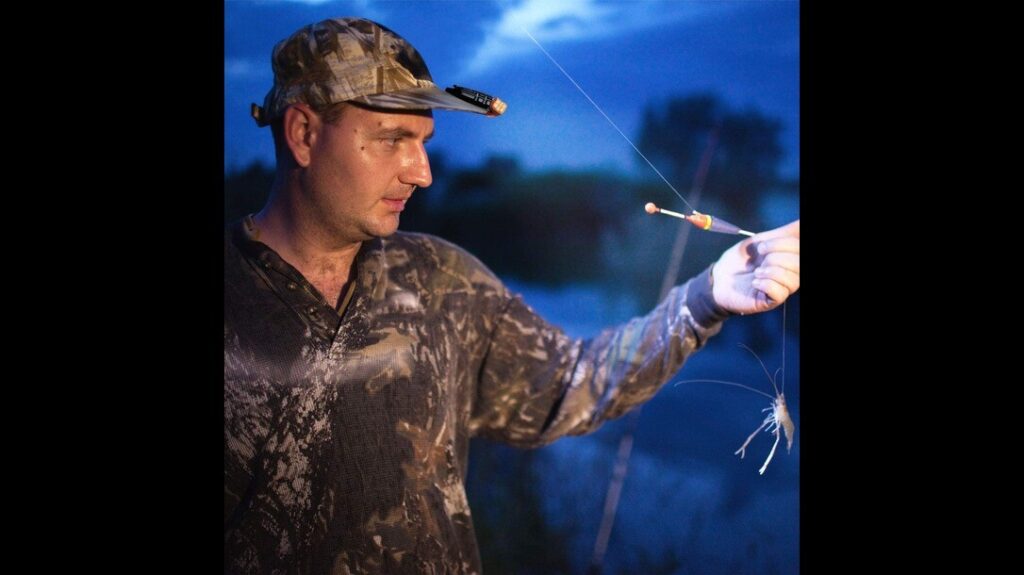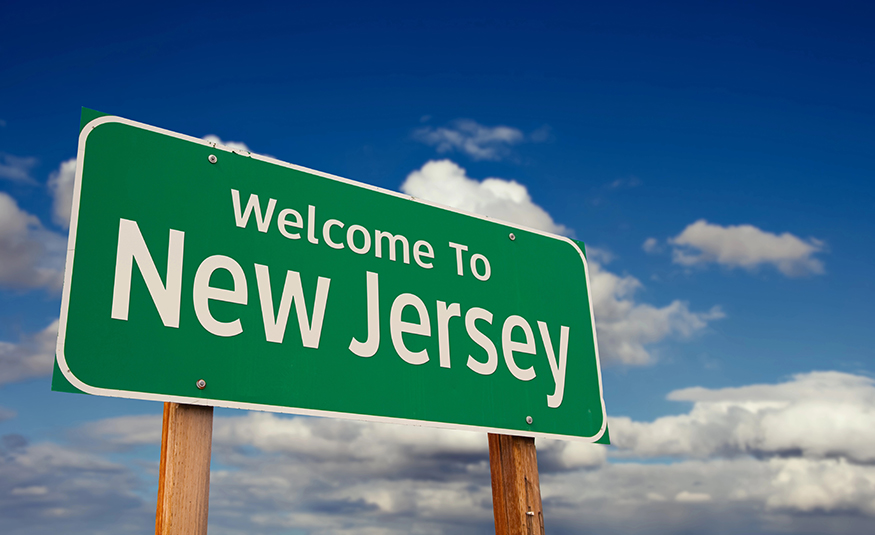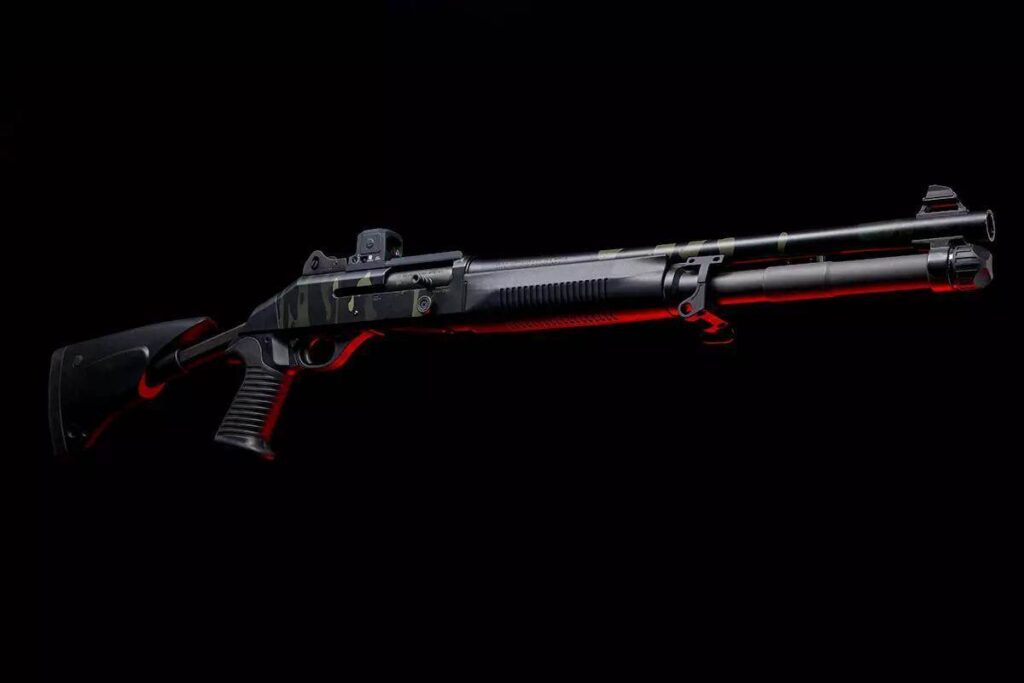Growing up in the United States, I often saw traditional curved knives in kitchens. However, traveling opened my eyes to the differences between straight vs. curved blades for EDC and camping. Each blade has its unique charm and purpose. Exploring these options transformed my cooking and outdoor experiences.
Straight vs. Curved Blades
In the Kitchen
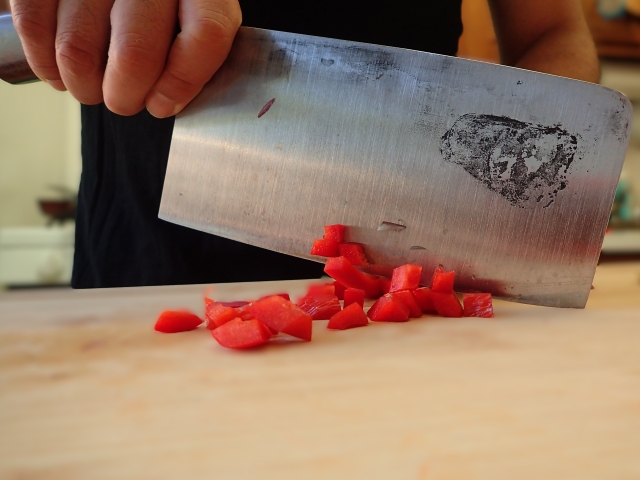
Western chef knives are common globally. In the United States, we’re used to butcher, skinning, boning, and pairing knives. They all have a sharp point and a curved blade edge to some degree. Cleavers are usually an afterthought, reserved for butchers.
Advertisement — Continue Reading Below
Western chef knives work best when used with a rocking motion, called rock-chopping. This method allows you to keep the blade on the cutting board while rocking the blade from heel to tip. Cross-chopping is also a good technique when using a Western chef’s knife with a pronounced curve.
Cross-chopping is a quick mincing method. You hold the knife tip steady with one hand or 2-3 fingers over the spine. Then, rock the handle back and forth with the other hand to chop herbs or small items.
Lessons from the Far East
Advertisement — Continue Reading Below
It’s hard to pin down how many people use a Chinese chef’s knife (caidao, or cleaver) compared to a Western one. However, the caidao likely has more users. Its popularity in China contributes to this trend. While the Western chef’s knife is a global favorite, China’s massive population boosts caidao ownership. More people probably wield this versatile tool daily!
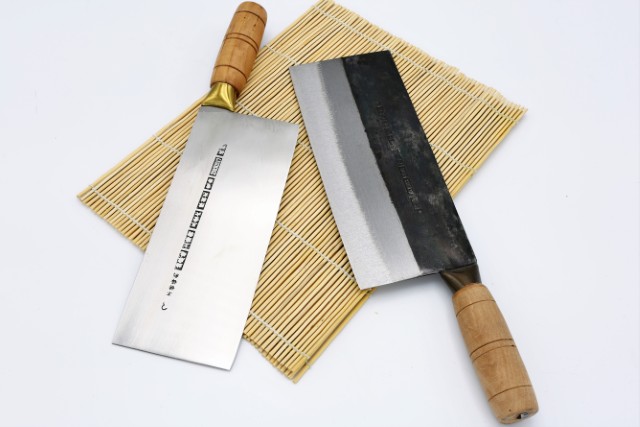
In contrast to rock-chopping with a Western chef’s knife, a flat-bladed knife does it differently. With a Chinese chef’s knife or a Japanese Santoku, we use the push-cutting technique. A simple, angled forward motion over the ingredients with the forearm is the easiest way to describe this method.
Advertisement — Continue Reading Below
Like the guillotine taught us, straight blades need an angle of approach to be effective. Draw slicing is a cinch with a flat blade, front tip down, and draw back for accuracy. A Chinese chef’s knife and any broad, flat blade can also cross-chop and benefit from scooping ingredients.
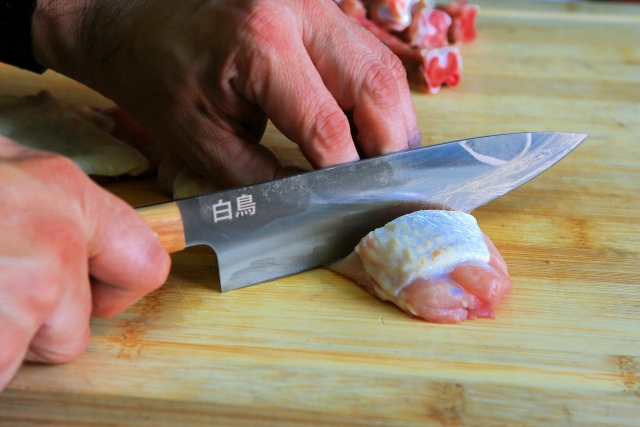
Choose your kitchen knife based on experience and by trying them out before picking your preferred edge!
Advertisement — Continue Reading Below
Utility Cutters
I can’t think of a box-cutting knife in a warehouse or store that wasn’t straight. However, I’m a fan of whatever works. Sheepsfoot and Wharncliffe-style blades are natural box cutters on steroids. By pressing your index finger against the spine near the tip, you can control the depth of the cut. Much like the sliding lever on a box cutter adjusts the blade depth.
Again, draw cutting is easy with these two blade styles. Try that with a curved blade and feel how awkward it is to use the tip— body mechanics will agree.
Boating and rescue crews prefer sheepsfoot-style blades for the added protection from piercing. Slicing rope, leather, seatbelts, or vines in a hurry is done safest with a sheepsfoot or Wharncliffe blade.
Advertisement — Continue Reading Below
Additionally, straight blades are excellent for crafts. Slicing leather, cutting heavy construction paper, rubber, plastic strapping, and foil. Don’t forget, straight blades excel at cutting letters from a newspaper or magazine to send a good ransom letter!
EDC and Camping with Straight and Curved Blades
In the woods, office, or restaurant, the general public will be less intimidated by seeing a blade without a conventional point. The tip and curve of the majority of outdoor knives, like drop or clip points, are what make them effective. Piercing hides for skinning, point-down wood splitting for kindling, jabbing holes in materials, or self-defense require a sharp tip. Skinning calls for a deep belly and an upsweep. Try that with a straight blade.
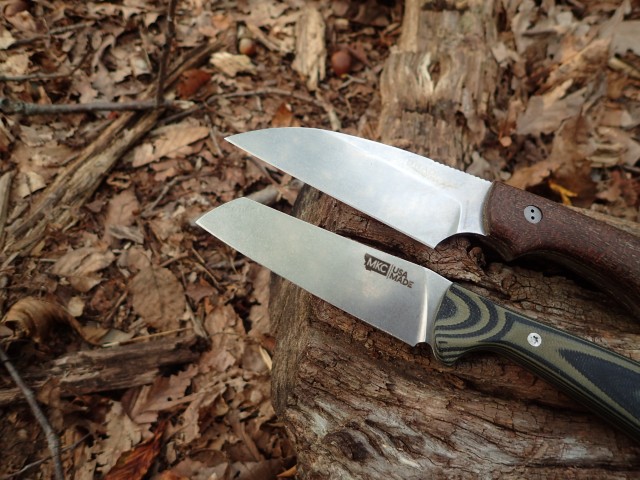
Advertisement — Continue Reading Below
However, there’s a place for straight-bladed knives like the sheepsfoot or Wharncliffe. Carving knives have used the Wharncliffe shape for centuries for precision. These blade styles advocate forward pressure because there’s no belly or upsweep to dissipate energy.
Batoning with a sheepsfoot blade is better than a Wharncliffe because a sheepsfoot is thicker towards the tip. Wharncliffe knives are narrow and thin towards the tip, which makes them more prone to breaking.
Quick Facts: Straight vs. Curved Blades
Straight Blades (Wharncliffe / Sheepsfoot):
Advertisement — Continue Reading Below
- Cutting style: push cuts and linear draw cuts
- Precision: very high—controlled, exact lines
- Tip use: Wharncliffe = fine point; Sheepsfoot = safe, blunt tip
- Sharpening: simple—flat edge is easy to maintain
- Best for: carving, utility, rescue, detail work
- Weakness: poor for rocking cuts, less slicing flow
Curved Blades (with Belly):
- Cutting style: rocking and sweeping cuts
- Precision: moderate—fluid, efficient motion
- Tip use: drop or clip points—versatile for piercing and slicing
- Sharpening: trickier—requires following the curve
- Best for: skinning, food prep, continuous slicing
- Weakness: less precise for straight-line cuts, harder to sharpen
Conclusion
This peek into straight vs. curved blades for EDC and camping only scratches the surface of knife use. Try out as many as you can from friends and family before making an informed decision on which is best for you. As for me, a Chinese chef’s knife in the kitchen all the way!
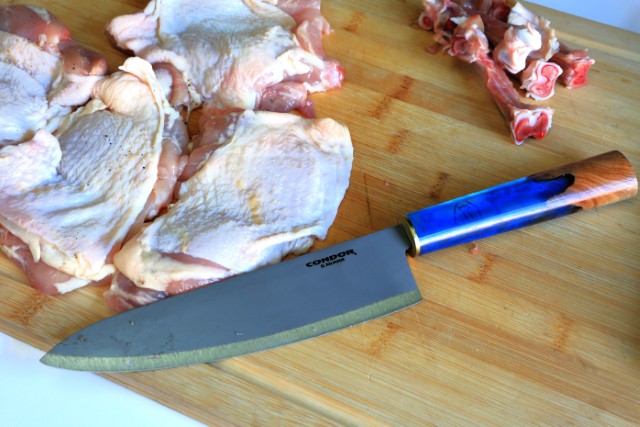
Advertisement — Continue Reading Below
